Scientific Facts
| Common Name: | New Zealand |
| Scientific Name: | Oryctolagus cuniculus |
| Life Span: | 5 to 8 years |
| Size (Adult): | Large |
| Weight (Adult) | 10 to 12 pounds |
| Habitat: | Human homes and properties |
| Body Shape: | Commercial |
| Country of Origin: | United States |
Physical Description

New Zealand is a rabbit breed that was created in the United States and not in New Zealand. It originated in California from rabbit breeds that were imported from New Zealand. Today, New Zealand is a breed recognized by the American Rabbit Breed Association or ARBA and is available in a variety of colors.
An adult New Zealand can weigh from 10 to 12 pounds, with females slightly heavier and larger than males. This rabbit is used for its meat and also for testing various products. It is also bred for show and also as pets. Does can weigh 10 to 12 pounds while males are 9 to 11 pounds. Females have a dewlap or a fatty flap of fur found below the chin. Females use their dewlap to line their nests to keep these warm for their babies. Also, females with small dewlaps are better, while males must not have this at all.
The very first thing that you’ll notice with a New Zealand is that it looks very similar to many large and robust rabbit breeds like the American. But this rabbit breed has some differences. This has a broad and muscular body with medium length. It has well-rounded haunches and has ears that usually stand up than being lopped.
The fur of New Zealand is of normal length and can fly back. A flyback means that even if you brush the fur in the incorrect direction, it will fly back to its original direction or position.
The white New Zealand rabbit breed is known for its genetic deviation called albinism. This is caused by decreased melanin, which is a pigment found in most animals. Albinism causes a snowy white fur. Also, white rabbits have bright eyes, which are very red. And due to the eye color and white coat, white New Zealand rabbits are known as REW or ruby-eyed white rabbits. REW is a kind of recessive trait and is epistatic to most genes of rabbits.
New Zealand Show Standards
The ARBA treats all types of New Zealand rabbits equally, but the British Rabbit Club or the BRC has a different standard for red New Zealand. Meanwhile, blue New Zealand is recognized in the United Kingdom and the BRC. The ARBA recognized the blue very recently in 2016. And when the white, red, and blue New Zealand are judged in a show or competition, these are done on body type.
History of the Breed
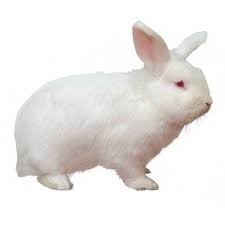
New Zealand was developed in California from a mixture of breeds. Experts say that the mix included the Belgian hares as well as the Flemish giants. This breed was developed for its fast growth rate and its excellent quality meat. It was added to the US rabbit standard in 1916.
The original color of New Zealand is red. White New Zealand was made by William S. Preshaw in 1917, and he used the genes of white rabbits born from a litter of red New Zealand rabbits. However, red New Zealand remained the most popular for their meat. This rabbit soon caught on in the fur market as the white pelt of the red variety can be dyed.
Uses of the New Zealand Rabbit
The New Zealand rabbit was not really developed as pets but was created for their tasty meat and their lovely fur. Commercial fryers were slaughtered at 10 weeks, while older rabbits are called roasters. White rabbits are usually more in-demand for their luxurious fur. The white fur of this rabbit is easier to dye.
New Zealand rabbits with high-quality furs were used to manufacture fur coats as well as fur trimmings. The lower-grade furs are used to make pelt hats, glove linings, and shoe linings.
Also, New Zealand is mostly used as a meat rabbit because of its high feed to meat ratio with bones. This rabbit is also known as one of the best breeds for meat. Rabbits that are used for commercial production are fed commercial rabbit feeds that are high in protein compared to the usual moderate amounts plus alfalfa hay.
New Zealand rabbits are also used in laboratory testing due to their good health and docile temperament. Rabbits like New Zealand react very similar to humans when it comes to diseases as well as medications. This allows this breed to be used in laboratory studies and pharmacological research. Rabbits are used in cancer research centers, university hospital research centers, and US Public Health offices.
This breed is useful in the research of diseases like tuberculosis, cancer, diabetes, diphtheria, and cardiovascular diseases. Also, the effect of health products, cosmetics, and beauty products are also tested on New Zealand rabbits. ,
Fast Facts
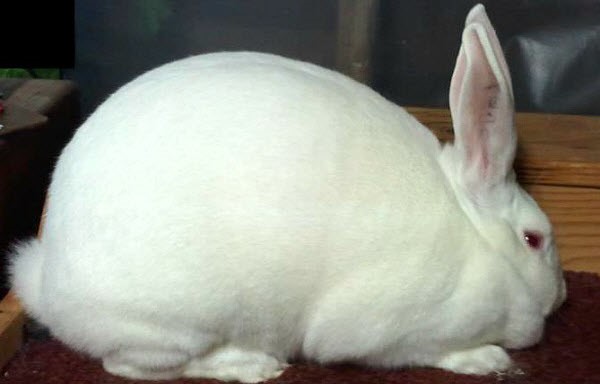
New Zealand rabbits are available in different solid colors like white, black, and red. Meanwhile, there are additional breed colors known as the broken variety, which were recognized by the ARBA in 2010. Blue New Zealand was the latest addition by ARBA in 2016.
New Zealand rabbits require regular maintenance because this can develop knots and can also shed a lot. If you have a pet New Zealand, it will shed fur like crazy, especially during the molting period. Therefore, you must vacuum your home regularly.
Reproduction

A female becomes fertile in just 8 to 12 weeks and can breed at 17 weeks old. Breeding earlier can cause harm to the mother and to her kits. Does are known to be fertile all year long, but the day length can vary. Gestation is from 28 to 35 days, but most will give birth at 32 days.
As a breeder, provide a nesting box around 2 to 5 days before the doe’s delivery date. The box must be lined with hay while the doe will get fur from her develop and abdomen to line the nest to keep it warm. Baby New Zealand rabbits are born blind, deaf, and hairless, and fur will start to grow around day 3 or 5. After days 7 to 10, the kits will open their eyes, and at two weeks, these will be curiously exposing their surroundings. This is also the time when the kits look for different food sources and hence will start eating food that you offer.
At age three to four, the mother will start to wean her litter from milk. The kits will now have hay and commercially-made rabbit food as their main food. A female can give birth to an average of seven babies, but some can give birth up to 14 babies. Captive rabbits are induced ovulators, and thus, the doe can easily become pregnant when introduced to a male provided the conditions are right. Females can become pregnant in 24 hours after giving birth.
Fun Facts
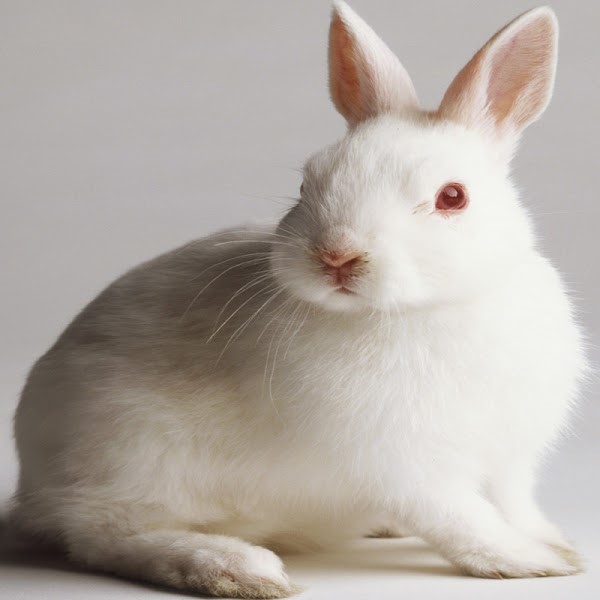
Rabbits are social animals and may also become bored too. So as much as possible, consider taking care of not just one rabbit but two, three, or more. A captive rabbit will also benefit from having more companions and along with this, a large cage for more room for your pets to run, play, and socialize.
Personality and Behavior
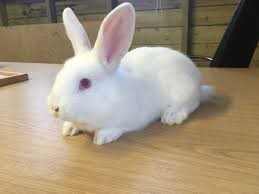
The New Zealand rabbit is docile and is known to be easy to handle compared to other domesticated breeds. If you want to keep one as a pet, you may do so because this breed is good with children as well with other pets. Rabbits that are socialized early can be good with other rabbits of the same breed and also with other pets.
New Zealand rabbits love to be handled and are very easy-going. These characteristics make this rabbit a good family pet for couples and also for families with young or older kids. New Zealand does not bite, kick, or have any aggressive behavior as long as you don’t hurt it or pose as a threat. This rabbit loves to be petted and placed on laps even by people that it has just met.
New Zealand rabbits are known as rag dolls because you can play with them, place them down anywhere, and can even play dress-up with them. And despite not being known as biters, you still need to be careful when handling a New Zealand rabbit. You must also provide toys that it can chew and nibble. You can use simple soft toys or use DIY items for your pal to stay happy and to avoid boredom.
New Zealand rabbits, as well as other rabbit breeds, may not be the easiest to tray, but you can litter-train a rabbit. Breeders say that having several litter boxes in different parts of your home can train it to poop in specific areas of your home. Place the litter box in a corner so that the rabbit can recognize the area easily. In time, and with lots of patience, your pet will be successful in litter training.
Breeding behaviors like jumping, mounting, and thrusting are common in most rabbit breeds. The male and female can engage in a long or short jumping sequence before these mates or until the female becomes receptive. And to show that the female is okay with mating with the male, she may lie down and allow the male to thrust her.
Cannibalism may exist in this rabbit breed, as well as some breeds as well. In wild rabbits, this is a way to remove all the blood and dead tissues where the doe has given birth and to avoid being detected by predators. When a kit is stillborn, the doe will eat the remains several times to avoid predators. This behavior can also happen when the female lacks feeding and fluids right after birth. The male rabbits don’t kill and eat their young.
The female is the sole parent that raises her kits. The males don’t play any part and will only serve as a heat source when the young sleeps next to them in the nest.
Comparable Breeds
The New Zealand rabbit is comparable with two large breeds, namely the Flemish Giant and the Belgian hare. The Flemish Giant is a giant breed of rabbit which can weigh from 9 to 14 pounds. It can live from 7 to 11 years and is best for outdoor cages, for show and also for singles and families. The Flemish Giant is friendly, sweet, and docile. This breed has a semi-arch or mandolin body shape and is comparable with the French Lop and the Giant Angora rabbit.
Meanwhile, the Belgian hare is a large rabbit species that can weigh from 6 to 9 pounds. It has a full-arch body and comes in a variety of colors. The Belgian hare is active but a bit nervous, especially in the hands of people that he does not trust. Also, this breed is comparable with the English Spot and the Flemish Giant.
Care of New Zealand Rabbits
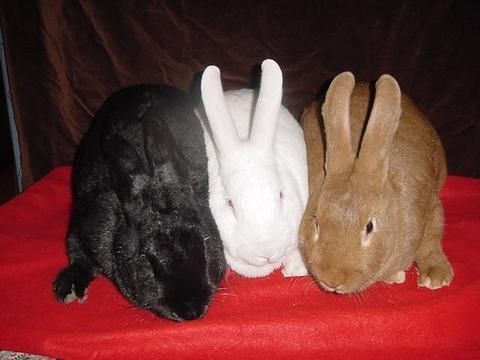
Taking care of a New Zealand Rabbit is like caring for other rabbit breeds. You must make sure you’re your pet has the correct diet, the right housing or enclosure, companionship, and proper medical treatment.
An important part of a rabbit’s diet is hay. Hay is considered the bulk of a rabbit’s diet, but you may also feed these rabbit pellets developed for rabbits. Commercially-prepared food has added vitamins and minerals for your rabbit’s good health. You may add vegetables and fruits for a well-rounded rabbit diet.
Provide your pets unlimited fresh water and hay. Hay is also an important part of a rabbit’s daily diet because it’s rough and is helpful in keeping their digestive tracts regular. Put the water in a heavy shallow dish so your rabbit can easily drink. A heavy dish is essential, so your rabbit won’t knock this over as it moves around its enclosure. An inverted water bottle with a spout at the end is also a good spill-proof way for your pet to drink.
Always make sure that your pet is eating the right kind of food. Protect it from pesticides, toxins, and herbicides by giving it organic fruits and vegetables. Younger rabbits may need alfalfa hay because it’s rich in calcium, which is a mineral needed for growing bones. The adult, New Zealand Rabbits, will eat legume hay.
Captive-bred New Zealand Rabbits are indeed lovable pets, but you must train them well. Interact with your pet rabbit by playing with it. Rabbits are social animals and thus will need companions aside from interacting with their owners. Rabbits that grow up with constant companions and regular interactions with their owners are healthier, happier, and are well-rounded rabbits.
New Zealand rabbits are like all rabbits when it comes to grooming. These rabbits will groom themselves to the point that it will take hours before they’re done. Rabbits may also be seen grooming each other, and experts say that this or a way to bond with other rabbits. Also, mother rabbits can also be seen grooming her kits when she is still in her nest, but this won’t last as she will soon be up and about to return only in the evenings to feed her offspring for only a few minutes.
New Zealand rabbits are like people as they are most active in the daytime and tend to sleep in the evenings. With this in mind, feeding your pet, New Zealand rabbit, should be done in the morning when they are most active.
Usually, captive rabbits sleep 8 hours a day and may sleep huddled together to keep warm. When designing a cage or enclosure for your pet rabbits, create a large area where they can eat, play, and sleep.
Supplies and Cages

The enclosure for captive New Zealand Rabbits should be made of wire and have a strong frame. The bottom should be removable where the rabbit’s droppings will easily fall. This pan makes it easier to clean the cage as well. The floor of the enclosure must have soft bedding so that it is comfortable for your rabbit to remain on.
A rabbit hay feeder on the side of the enclosure is a good idea. Fill this with hay so your rabbit can eat hay when it feels hungry. For the bedding, you must only use hay, wood pellets, or pelleted horse bedding. Newspapers, paper towels, or brown paper bags can easily tear up and won’t be good cage bedding for a rabbit enclosure.
To clean the cage, first, remove your pets and place these inside a safe and clean enclosure. Use only a safe cleaner or natural cleaning product such as white vinegar, baking soda, or lemon juice. Do not use household cleaners because these may have toxic ingredients that can be dangerous to your pet’s health.
You must also consider having a separate or extra cage if you plan to breed baby New Zealand rabbits. These rabbits are born naked, deaf, and blind. These need a warm enclosure to keep their bodies at the right temperatures. Use a smaller cage with a cage lamp or lighting to keep kits dry, warm, and safe.
And just like other breeds, New Zealand rabbits will love chewing on things. If these rabbits are kept indoors, these will chew on anything that’s made of wood, such as wooden walls, fixtures, and wooden furniture. This rabbit can also chew on electrical wiring. To prevent accidents, provide hay or chew toys inside the cage. Don’t forget to rabbit-proof your home before releasing your pet rabbit.
Health Concerns
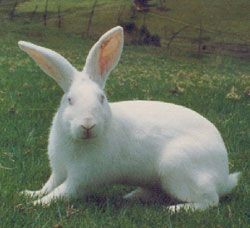
A New Zealand rabbit is known as a healthy breed and is not affected by any disease. The reason for this is the result of extensive breeding as a commercial rabbit. The most common conditions that the New Zealand rabbit may be affected with are pests such as mites, ticks, and fleas because these can be naturally found in their environment.
Meanwhile, these rabbits are not immune to common rabbit diseases. You must always monitor your rabbit’s health and temperament because any change could be due to an illness. So, as early as your pet is able to open its eyes and get out of its nest, take it to the vet for standard vaccinations and tests.
These tests will assess the overall health and development of your rabbit pet. Also, consider that there are rabbits with sensitive digestive systems and, therefore, could be prone to different health conditions that affect the digestive system such as enteritis, bloat, and stasis. These conditions may affect rabbits, which are less than two months of age.
Make sure to watch out for ear or fur parasites. The most common are mites, fleas, and ticks. Rabbits that are affected by these parasites usually have poor hygiene and are kept in dirty surroundings and enclosures.
You must always check your rabbit for any signs of illness such as poor appetite, nasal and eye discharges, diarrhea, constipation, and vomiting. You should also be mindful of an unsteady gait, restlessness, grating of the teeth, and sleeping for extended periods because these could be signs of a serious condition.
Another very important part of taking care of rabbits and other pets is deworming. Your New Zealand rabbit must be treated for worms at least once a year and should be done during springtime and fall. Take note that this is a major concern especially with rabbits that come from the wild or are bred from wild parents
All rabbit breeds must be dewormed. Use a deworming paste; a pea-sized amount will do. Put this in the rabbit’s mouth, and this will continuously lick and swallow the medication. You should follow the dose according to the product container for the best results.
Dental Care
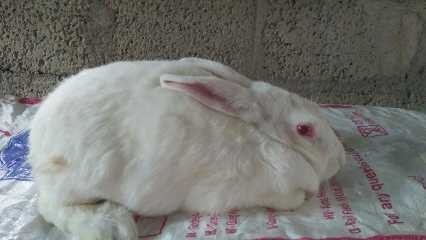
A rabbit’s teeth will continue to grow, and sometimes, their teeth can grow to extreme lengths that it can pierce the mouth and gums, causing pain and discomfort. As an owner, you must make sure that the rabbit’s teeth don’t overgrow.
You can help your rabbit by offering hay because this files down the rabbit’s teeth naturally while the rabbit chews. You may place pieces of wood, wooden baskets, or other accessories that can help fill the rabbit’s teeth. Monitor your rabbit’s dental health to save on expensive medical and dental bills in the long run.
Spaying or Neutering

Rabbits are very promiscuous, and any responsible pet owner will control this by spaying or neutering their pet or pets. You wouldn’t want a home overpopulated with rabbits
Spaying and neutering are done at a young age. However, some veterinarians wait until the rabbits are six months old to be safe. American bucks are also neutered at a young age because experts say that neutering reduces aggression. Some vets neuter bucks as young as three months. For any question about spaying and neutering, consult your vet at once.
Grooming
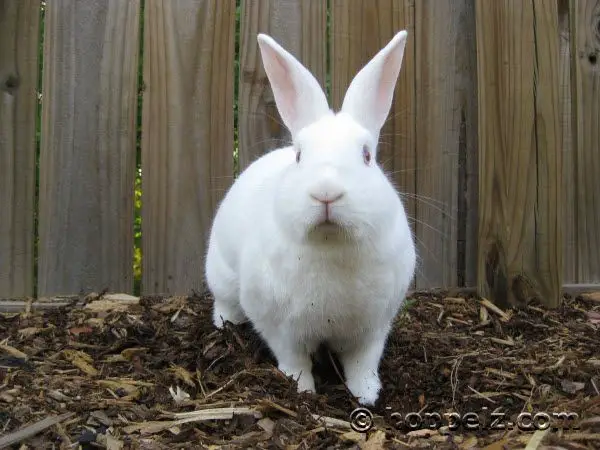
New Zealand rabbits have short to moderately short furs depending on the color and the smoothness of the coat. White rabbits may have longer and finer fur compared to other New Zealand colors, but no matter what color of rabbit you have, it will need regular grooming. Brush the fur to keep it clean, shiny, and free from pests. Groom this with a small brush at least once or twice a week.
Grooming should be done more frequently during their molting period, to prevent wool blocks and to keep the rabbit from ingesting their fur. This can accumulate in the digestive tract causing blockage and more complications if you don’t help your rabbit groom its coat.
If your rabbit is very dirty, don’t give it a bath because this can cause a lot of stress. You may use a damp towel to spot clean the dirt away. Just wipe the rabbit down with the towel and use a dry one to dry it off.
Trim your rabbit’s nails monthly and also check its mouth for overgrown teeth. You may ask the vet to do this for you if you don’t have tools for cutting or if you’re not comfortable with cutting the rabbit’s nails and checking its mouth. You must also clean the rabbit’s ears.
Availability – Where to Get One?
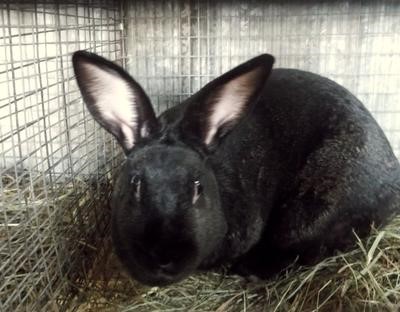
The cost of buying a New Zealand rabbit may depend on whether you are getting a rabbit from a breeder or a retailer. The price will also vary whether you are getting a rabbit for a pet or for show. You can expect the price to vary depending on gender, size, coat quality, and appearance.
And when you are looking for a reliable breeder, be sure that you are getting one that’s healthy, and with no genetic disorder. Purchase only from reliable breeders who raise healthy New Zealand Rabbits. This breed may be seen in trade fairs and farm events. Meanwhile, there are also shows and contests sponsored by the ARBA that feature this breed.
How to Care for a New Zealand Rabbit
This is a summary of how to care for a New Zealand rabbit breed. Caring for a New Zealand rabbit is just like caring for other breeds. There are four basic components of its care: a correct diet, housing, companionship, and vet care.
The main food of captive-bred rabbits is hay. Hay is important in their diet so they can chew this to grind their every-growing teeth, to keep their digestive system healthy, and to maintain regular bowel movements. You may also use pellets that are designed for rabbits, vegetables, and fruits for a well-rounded rabbit diet. You may also give them food found in their natural habitats such as grasses, twigs, birch, maples, and weeds.
Always keep fresh water and hay available inside the rabbit’s cage. Hay is rough and is perfect in keeping their digestive tracts healthy and regular. You must place water in a large, heavy shallow dish so that your rabbit can drink from it, and because this is heavy, it won’t knock it over as it moves inside the cage.
Keep in mind that captive-bred rabbits can only become a calm, friendly, and docile pet when you invest time to train it. It would help a lot if you train and interact with your pet daily. Also, captive rabbits are social animals and will need a rabbit companion or companions.
If you don’t have the resources, space, and the patience to care for two or more rabbits, then this is not the pet for you. Take note that your pet can grow healthy, with good temperament and with a docile behavior when it socializes with some cage mates and of course, with you, its owner.
Finally, take your pet to the vet. It needs vaccinations, tests, and a clean bill of health before it can be allowed to associate with other rabbits, pets, and people. Understand the different signs of illness in rabbits, and for any symptom, take it to the vet for proper care.
FAQs
Where do New Zealand rabbits live?
You won’t find a New Zealand rabbit in the wild because these are domesticated rabbits. These live in human areas and commercial establishments, including breeding kennels, pet stores, and human homes as a pet. For New Zealand rabbit pets, these may be housed in large cages indoors or outdoors, preferably in groups for companionship.
Can you keep a New Zealand rabbit as a pet?
Yes, you can keep the New Zealand rabbit as a pet because it is docile and sweet. It is a good pet for families but not for families that have small children because of the size of this rabbit breed.
Are New Zealand rabbits carnivorous?
No, these rabbits are not carnivorous and are, in fact, herbivores, which means that these won’t eat meat. It will only consume plants or plant parts such as roots, bark, leaves, flowers, twigs, stems, seeds, and more.
What do New Zealand rabbits eat?
New Zealand rabbits are herbivorous, and this means that it will eat plants. These will eat all plant parts such as roots, bark, seeds, weeds, flowers, and leaves, and in captivity, it can eat commercially-prepared rabbit food or pellets, vegetables, and fruits.
Should you take a wild rabbit from the forest?
Don’t pick a wild animal like a rabbit from the forest. You can’t tame it, and you won’t be able to make it your pet because it will remain wild. If you see an injured rabbit, you may call animal services for help right away.
Are New Zealand rabbits endangered?
No, New Zealand rabbits are not endangered. There is a large population of New Zealand rabbit breeds available from local and international breeders as well as in pet shops and in human homes as pets.
Can New Zealand rabbits swim?
Yes, New Zealand rabbits can swim just like other rabbit breeds, but this is not as good as other water animals. However, most rabbits do not want to get wet and will not like a bath because this stresses them a lot.
How do you tame a rabbit?
A wild rabbit cannot be tamed, and we don’t recommend this because you might end up getting hurt. You can train a captive-bred rabbit instead because most of these rabbits have a docile behavior and are calmer than wild rabbits. However, these may still need constant handling and interaction with their handlers to remain tame, happy, and healthy, even in captivity.
Do New Zealand rabbits eat fruits and vegetables?
Yes, New Zealand rabbits can eat fruits and vegetables. Aside from these, you may also feed your New Zealand rabbits commercially-prepared pellets or rabbit food which contain nutrients that your pet needs daily.
Will New Zealand rabbits eat their poop?
Yes, just like all rabbit breeds, New Zealand rabbits will eat their poop because these still have nutrients in them. But after eating their poop once, they won’t do it the second time. It is still unknown why rabbits do this, and you can prevent this by removing their droppings ASAP.
Can you keep two or more New Zealand rabbits inside a cage?
Yes, you can keep two or more rabbits in one cage as long as their cage is large enough to keep your pets in. Keep in mind that the cage should be large, comfortable, and safe so your rabbit or rabbits can remain inside comfortably.
How do you clean a New Zealand Rabbit’s cage?
Remove the rabbit inside the cage and place it in another clean cage. Remove the pan where the poop is found and dispose of the droppings appropriately. Use a hose, a brush and cleaning product, and clean the cage walls, bottom, accessories, and rabbit toys. Always make sure that everything is dry before placing your pet back inside the cage.
How do you take care of baby New Zealand Rabbits?
If you want to breed New Zealand Rabbits, put the kits in a comfortable and warm enclosure. Feed them soft, pureed food and keep these safe and warm. Protect these from predators also from your house cat or pet dog. For wild-caught bunnies, call animal services to have these rescued properly.
Can you leave a New Zealand Rabbits indoors to play inside your home?
You may allow a rabbit to stay indoors but only under your constant supervision. You must use a portable perimeter fence to cordon off areas that the rabbit can’t go. Keep in mind that you have to rabbit-proof your home before you let your rabbits lose.
Do you place a New Zealand Rabbit’s cage indoors or outdoors?
The location of a rabbit’s cage may depend on your preference. You may place the cage of your pet indoors to protect it from the elements, but most indoor cages tend to be small and may not be enough for a large, adult New Zealand rabbit. When you erect your cage outdoors cage, the rabbits may need to bear the cold, but at least they will have a large area for playing.
How large should a New Zealand rabbit’s cage be?
One New Zealand rabbit must be placed in a large enclosure because of its large size. For two large rabbits, double this area. You must never overlook the size and al-ways make sure that your rabbits have enough space to play, eat, and sleep.
Are New Zealand rabbits territorial?
Experts say that New Zealand rabbits may become territorial when these are kept in a small cage or enclosure. Males can develop aggressive behavior become very dangerous to other males, especially in the breeding season. These can bite, scratch, and kick their opponents in the attempt to establish hierarchy.
Do you need to place a heater inside a New Zealand Rabbit’s cage?
You can use a cage lamp to provide heat. But in extremely cold climates, you must use a small portable heater and place this near the rabbit cage for a comfortable place for your pet. This is important, especially for warming kits.
Will a mother, New Zealand rabbit, eat her young?
There are some rabbit species that can eat their young. Breeders are still wondering why does do this, but if you spot the mother New Zealand Rabbit eating her young, remove it from the litter or nest and don’t let it breed again.
Can rabbits survive the cold?
Yes, rabbits may stay in the cold and survive by foraging food that’s under the snow. Rabbits will use their short legs to dig out snow and eat unfrozen roots, shrubs, berries, and other food that they can find.
Can New Zealand rabbits remain outdoors?
A pet New Zealand rabbit may be allowed to stay outdoors, but you must remember to rabbit-proof your yard first. A portable perimeter fencing is a good way to limit the area where the rabbit can roam free. Bury the poles of the fence to prevent the rabbit from digging the post out and escaping.
What happens when the teeth of the New Zealand rabbit grow longer?
When the teeth of the rabbit grow longer, these can pierce its mouth and gums, causing a lot of pain, and pain can also affect its appetite. This is why your pet rabbit must see a dentist regularly. You can help by feeding it hay since this can grind their teeth shorter as the rabbit chews.
How often do rabbits should visit the vet?
Rabbits should get a check-up at least once a year. Young rabbits must also be vaccinated against rabbit diseases as early as possible, and they need to have an initial visit to a vet during when they are just a few weeks old.
Are New Zealand rabbits bites dangerous?
Yes, New Zealand rabbit bites and the bit of all rabbits are dangerous because rabbits may have rabies. Also, rabbit ears are huge, and this can easily tear off the flesh and can also lead to an infected, deep wound.
Can New Zealand rabbits escape their cages?
Yes, New Zealand rabbits can escape their cages by kicking or knocking their cages down. These can’t jump over and escape but will use force to escape instead.
Can you prevent a New Zealand rabbit from eating his poop?
You can stop a rabbit from eating poop by removing the droppings right away after these defecate, but of course, you can’t watch your rabbits 24/7. But no matter what, these animals will still eat their dropping because they know that it still has nutrients in them.
Does it hurt when a New Zealand rabbit hits you with its hind legs?
Yes, because New Zealand rabbits have very sharp claws, especially on its hind feet. This can kick very hard with its hind feet, which can inflict so much damage. The rabbit will only do this when it feels threatened or afraid.
Can rabbit diseases harm humans?
Some rabbit diseases can affect rabbits, while some are dangerous to humans. If your rabbit is sick, you must take it to the vet as soon as possible. You must learn how to check for the different signs of illnesses such as poor appetite, diarrhea, constipation, sneezing, difficulty in breathing, and changes in behavior. Take your pet to the vet as soon as possible.
Do New Zealand rabbits have good hearing?
Despite the New Zealand rabbit having smaller ears compared to other rabbit breeds, this has good hearing. It can hear its predators from far away, and thus it still has time to jump and escape the threat.
Can rabbits see well in the dark?
Yes, rabbits have good vision, especially at night. This is the reason why some species prefer to look for food at night. Rabbits like the New Zealand rabbit also have a good sense of smell and hearing to allow them to recognize predators near the area.
Are all rabbits cannibals?
Eating their young is seen in some rabbit breeds. Experts say that this happens because the female is hungry or thirsty inside its cage. Also, this is a way to remove any traces of tissue, blood, and smell in the nest, especially when the baby rabbit is stillborn.
How young do you spay or neuter your pet rabbit?
It depends on the vet as to when to spay or neuter a pet rabbit. Some bucks are spayed as young as 3 months while some vets will wait till these are 5 to 6 months.
Can you train your rabbit to wear a collar and leash?
Some pet owners have been successful in training their pet rabbits to wear a collar and a leash, but some say that it depends on the breed.
Will New Zealand rabbits recognize their owners?
Some rabbit owners say that their pets are able to recognize them and can tell if they are being handled by their owners or by someone else.
Can pet rabbits tolerate children?
Some rabbits are very skittish and don’t want to be held, especially by young children. Some are calm, docile, and friendly and will love to be held and petted even by young children.
Will your pet rabbit survive the cold?
Some rabbits can survive the cold and will even find food under the snow. Some rabbits can change their fur color to adapt to the winter weather; however, some may not survive, especially desert rabbits.
Can you place the cage of New Zealand rabbits near other rabbit pets?
Yes, you can do this, and this is actually the setup in most pet shops and stores. New Zealand rabbits are very friendly, docile, and calm, so this won’t be a problem at all.
What to do with abandoned baby rabbits?
If you’re certain that wild kits are abandoned in their nests, contact animal service. You should never get baby rabbits from the wild to raise as pets.
How many rabbits can you keep as a pet?
You can keep three or more rabbits as a pet as long as you have a large cage or enclosure to keep these comfortable and happy. Keeping only one rabbit will make it lonely and will only affect its health.
Will rabbits eat insects?
No, rabbits won’t eat insects. This animal will eat only plant and plant parts, commercially—prepared food or pellets, fruits, and vegetables. Just make sure to provide organic produce to avoid chemicals and toxins that can harm your pet.
Where do rabbits sleep in the wild?
In the wild, rabbits may sleep in holes or burrows. They dig holes as deep as several inches to remain there all day. Rabbits can also sleep in dens and nests. In captivity, they must live in an enclosure that can accommodate a group of rabbits and should be safe and secure from predators.

